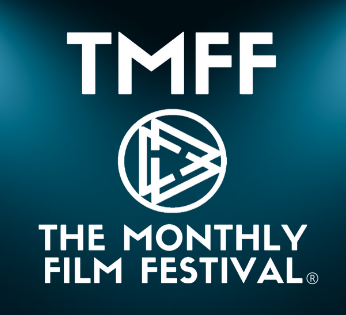
‘This documentary isn’t about the perfect smile or the winning walk. It’s about real people with real lives – mothers, daughters, survivors, dreamers – each bringing their full selves to an arena that’s too often misunderstood, ‘ state Morgan and Charlie Mancini, the creators of the documentary we are about to review, titled ‘War of the Crowns: Fashion vs Beauty‘.
‘War of the Crowns’ takes us on a journey to Australia, where we meet Charlie and Morgan Mancini, a mother-daughter directing and producing duo behind ‘Miss Diamond International’, one of Australia’s biggest beauty pageants to date. However, it only takes a couple of minutes into the film to acknowledge that this is not an ordinary, conventional beauty pageant at all. Quite on the contrary, Charlie and Morgan have created and nurtured something beautiful and authentic in the attempt to redefine what beauty pageantry symbolises. In other words, they have preserved the competitive spirit of the event and pageantry as an institution, but at the same time, they are more interested in exploring and presenting the contestants’ intimate stories, their resounding journeys, poignant backgrounds and inspiring life goals.
With that being said, there’s no doubt that the concept behind ‘War of the Crowns’ is the film’s unique selling point. By the end of it, one would undoubtedly have learned more about beauty pageants from this film than from any other form of media that has conveyed the same subject. What’s even more important to note is that the concept is transparent, so even people from different backgrounds who have never participated in (or know someone who has been involved in) a competitive event can access the storytelling without any issues whatsoever.
What Charlie and Morgan Mancini do (and it must be stated that they do it very successfully) is throw the bait at the viewers from the outset. After the opening montage sequence, we are introduced to the two protagonists, who welcome us into their world. Meanwhile, we gain a better understanding of the rules and formats, the other contestants, and the logistics behind organising an event that has drawn dozens of people. The camera here bathes in warmer colours, and the editing is so smooth and dynamic that the first thirty minutes manage to identify and follow the key contestants, reveal important backstories, introduce the judges and reveal the stakes. At one point, Charlie and Morgan agree that they want everyone to feel like they belong here and are worthy of enjoying the spotlight. Once everything is set, the film adopts a steadier pace, preparing us for the intense and unpredictable finale.
This, alongside other missions and goals set for the parties, is supported by following the various interactions between them. As a result, we get a glimpse of a shy young girl who is hesitant to take part in a photo shoot; we have a smile on our face when Morgan Mancini converses with the judges, who tell her that a couple of women communicated they are not here to win at all; we recognise and value the bond these women have forged over the course of the event; we empathise with and root for them at the same time. ‘Miss Diamond International’ hosts women of all ages – from the youngest who are encouraged by their mothers, to the oldest, who have the most experience and want to share that with those who are just starting. One needs to appreciate how Charlie and Morgan have erased the generational gaps. They’ve created a safe space for women to be their most authentic version of themselves without the fear of being marginalised. Most of all, they are here to give back to the community and raise awareness on noteworthy subjects, thus encompassing a plethora of messages, meanings and purposes.
The film’s production design is unmatched. The small, private sets are where we hear intimate confessions, where women open up and are not afraid to become vulnerable in front of the camera. The large sets are more energetic, naturally, as they capture the atmosphere and moods that make us feel like we are a part of the event as well. The soundtrack remains a constant throughout the narrative – by the end of the film, we find ourselves humming the main theme over and over again. Furthermore, the judges’ question, asking each contestant, ‘Why do you think you should win?’ maintains the stakes and urgency. As mentioned, even though this is an event done in the spirit of friendliness and conveying profound messages, the competitive aspect remains present throughout. This dilemma keeps us invested, so when Morgan Mancini announces the winners, we are on the edge of our seats. Probably a lot of audience members out there would’ve already picked up their favourite contestants, but even if some viewers remain neutral throughout the selection process, they are definitely going to feel the pressure and relate to the participants on the podium.
On the other hand, the impression is that the judges are underused, as there’s still some room to inject conflict, especially in terms of how the most competitive women feel about and think of those who are there to make connections and meet people. In addition, the crowded scenes sometimes have difficulties with the audio, especially during the scene where the director explains the rules in response to a question from the audience. This is a lengthy dialogue-driven moment that could’ve benefited from intervention in post-production to make the sound clearer. Next, adding a couple more minutes would’ve further supported the structure, and perhaps involved Charlie more substantially. This approach could’ve also made room for following the main protagonists outside of the beauty pageantry framework, and thus reveal shots that are not always set in the interview rooms. Ultimately, the second half could’ve delved deeper into the challenges and obstacles the creators face, as there’s a potential to utilise the naturalistic, i.e., reality aspect of the documentary.
In summary, ‘War of the Crowns: Fashion vs Beauty’ demonstrates that every idea needs to receive significant support from its execution if it wants to leave a long-lasting impression. The directors have a gem in their hands (and they are mindful of it), which is why they devoted themselves to making a film that’s worthy of the concept’s quality and potential. One can only imagine the strength and perseverance to create a film at the same time the event is organised, as Charlie and Morgan needed to put different shoes on every time they stood in front of the camera, operated it, and hosted ‘Miss Diamond International’ while spending time with all of the women so that they feel welcomed and appreciated.
The results are satisfying, and the whole crew involved in the production should be proud of what they have accomplished. Naturally, the film is expected to stand the test of time. And who knows, perhaps ‘War of the Crowns’ will turn into a franchise in the near future, as we anticipate that, after the success of the initial instalment, this creative directing/producing pair have already set their minds on conceptualising the next edition of ‘Miss Diamond International’.
Written by Dimitar Dimoski





